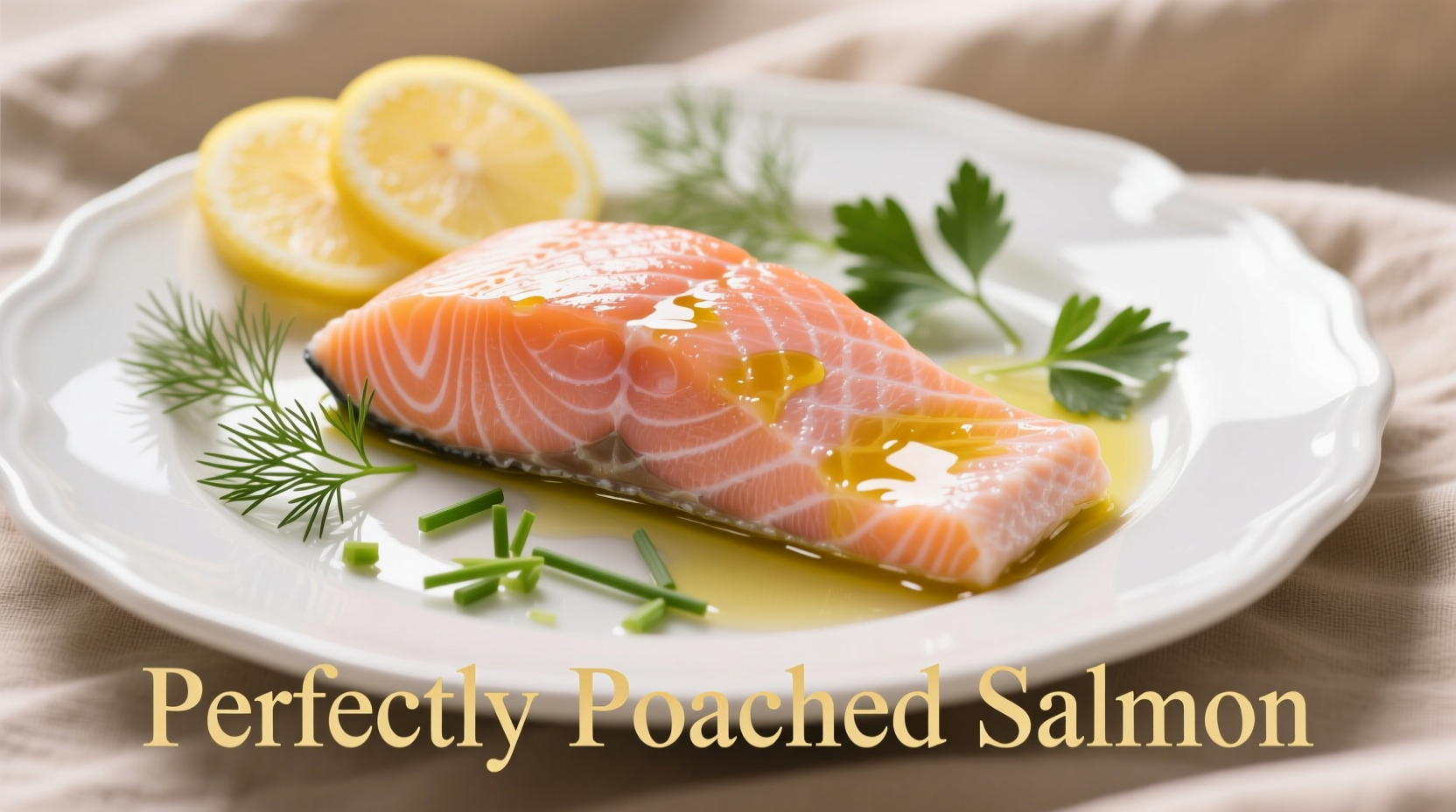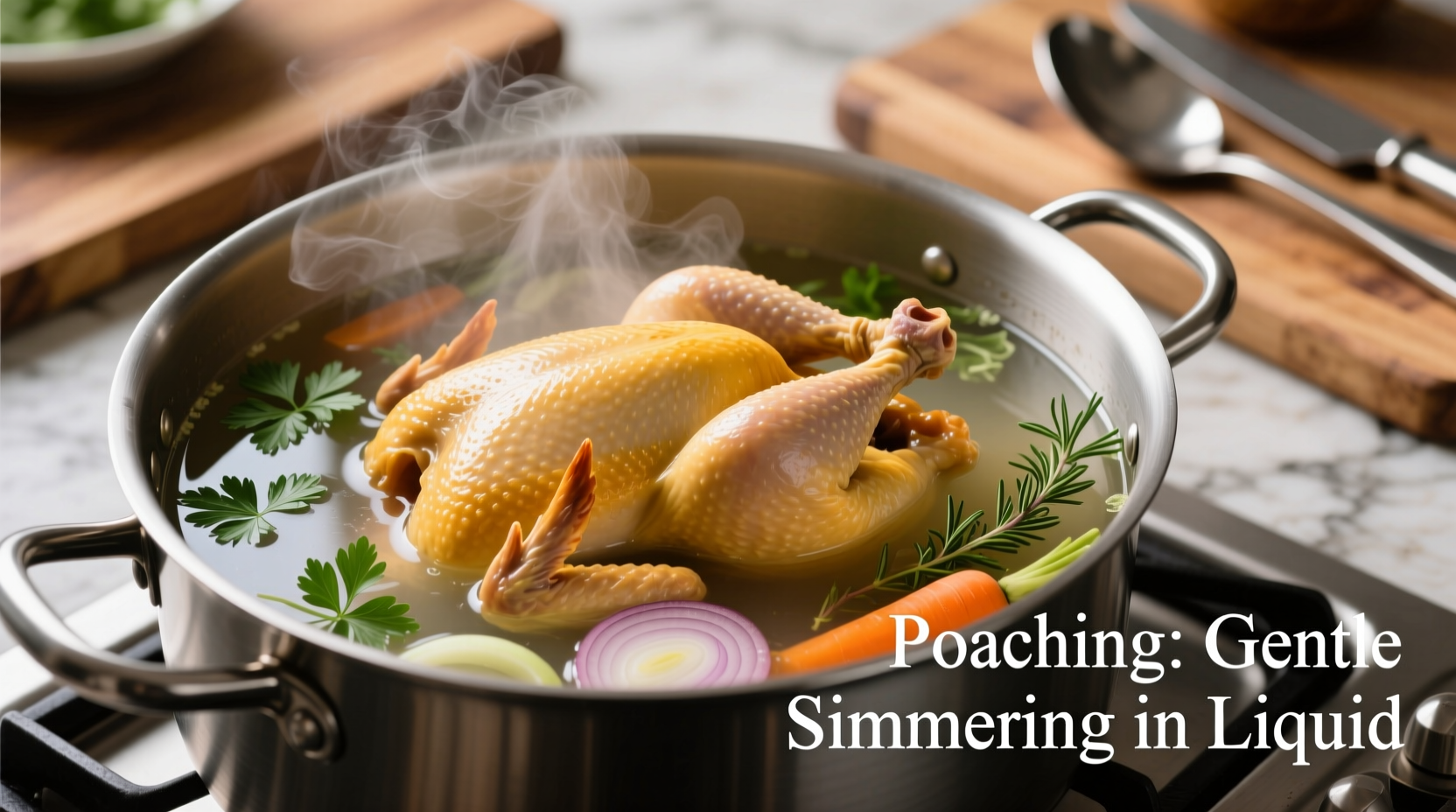The Gentle Art of Poaching: Preserving Delicate Flavors and Textures
When you need to cook delicate ingredients like eggs, fish, or fruit without compromising their structure, poaching offers the perfect solution. Unlike more aggressive cooking methods, this technique maintains moisture while preventing toughness—making it indispensable for creating restaurant-quality dishes at home.
Why Chefs Rely on Poaching for Delicate Ingredients
Poaching works through controlled heat transfer in a carefully maintained temperature zone. When food enters liquid below boiling point, proteins coagulate gradually rather than seizing up violently. This prevents:
- Fish from becoming dry and flaky
- Eggs from developing rubbery textures
- Fruit from turning mushy
- Chicken breasts from losing moisture
The USDA Food Safety and Inspection Service confirms that poaching temperatures (160°F-180°F) are sufficient to safely cook most proteins while preserving quality (USDA Cooking Temperatures Guide).
Poaching vs. Other Moist-Heat Cooking Methods
| Cooking Method | Temperature Range | Best For | Texture Result |
|---|---|---|---|
| Poaching | 160°F-180°F (71°C-82°C) | Eggs, fish, chicken, fruit | Delicate, moist, intact |
| Simmering | 185°F-205°F (85°C-96°C) | Stews, tougher cuts of meat | Tender but holds shape |
| Boiling | 212°F (100°C) | Pasta, potatoes, vegetables | Firm or soft depending on time |
| Steaming | 212°F (100°C) | Dumplings, vegetables, fish | Firm yet moist |
Mastering the Perfect Poach: Step-by-Step Technique
Follow these professional chef techniques to achieve flawless poached dishes every time:
Essential Equipment Checklist
- Wide, shallow pan (provides even heat distribution)
- Candy thermometer (critical for temperature control)
- Slotted spoon (for gentle handling)
- Vinegar (for egg poaching)
The Temperature Sweet Spot
Many home cooks fail at poaching because they confuse it with simmering. The ideal poaching temperature shows:
- Visual cue: Tiny bubbles forming at the bottom of the pan but not rising to the surface
- Surface appearance: Liquid remains completely still with no movement or agitation
- Thermometer reading: Consistently between 160°F-180°F (71°C-82°C)

When Poaching Works Best (And When to Choose Alternatives)
Understanding the limitations of poaching helps you select the right technique for each ingredient:
Ideal Applications for Poaching
- Eggs: Creates tender whites with runny yolks (add 1 tablespoon vinegar per quart of water)
- Fish: Preserves delicate structure of salmon, cod, and halibut
- Poultry: Keeps chicken breasts moist without drying
- Fruit: Infuses flavors into pears, peaches, and apples without breaking them down
Situations Where Other Methods Excel
- Tougher meats: Use simmering for connective tissue breakdown
- Quick vegetable cooking: Steaming preserves more nutrients
- Flavor-intensive dishes: Simmering extracts more flavors from aromatics
Flavor-Boosting Poaching Liquid Formulas
The liquid you use transforms simple poaching into a flavor-building technique. Professional kitchens use these ratios:
- Basic Court-Bouillon: 4 cups water + 1 cup vinegar + 1 onion (quartered) + 2 carrots (chopped) + 2 celery stalks + 1 bay leaf + 10 peppercorns
- Sweet Poaching Liquid: 4 cups water + 1 cup sugar + 1 cinnamon stick + 3 star anise + citrus zest
- Asian-Inspired Broth: 4 cups dashi + 1/4 cup soy sauce + 2 inches ginger + 2 green onions
Remember to always fully cool your poaching liquid before adding delicate ingredients like eggs to prevent premature cooking.
Avoid These 3 Common Poaching Mistakes
Even experienced home cooks make these critical errors that compromise results:
- Boiling instead of poaching: Bubbles breaking the surface means your liquid is too hot, causing proteins to seize and become tough
- Overcrowding the pan: Adding too many items at once drops the temperature significantly, leading to uneven cooking
- Using insufficient liquid: Food must be completely submerged for even heat distribution (use 2-3 inches of liquid above food)
The Historical Evolution of Poaching Technique
Poaching has evolved significantly from its medieval origins to modern precision cooking:
- 14th Century: Early poaching involved submerging food in wine or vinegar mixtures without temperature control
- 17th Century: French chefs developed court-bouillon (aromatic broth) for fish poaching
- 19th Century: Escoffier formalized poaching techniques in "Le Guide Culinaire"
- Mid-20th Century: Introduction of thermometers allowed precise temperature control
- Modern Era: Sous vide technology enables exact temperature poaching without monitoring
Perfect Poached Egg Formula for Consistent Results
Follow this chef-tested method for flawless poached eggs every time:
- Fill a wide skillet with 3 inches of water and bring to 180°F (82°C)
- Add 1 tablespoon white vinegar per quart of water
- Create a gentle whirlpool with a spoon before adding eggs
- Crack each egg into a small bowl first, then slide into center of whirlpool
- Cook for exactly 3 minutes for runny yolks
- Remove with slotted spoon and drain on paper towels
For restaurant-quality results, chefs recommend using the freshest eggs possible, as the whites hold together better during poaching.
Advanced Poaching Applications for Home Chefs
Once you've mastered the basics, try these professional techniques:
- Double poaching: Place food in a covered container within the poaching liquid for extra gentle cooking
- Infused poaching: Add fresh herbs directly to the liquid for subtle flavor infusion
- Cold poaching: For delicate fish like sole, start with cold liquid and gradually heat to 140°F
- Finishing technique: After poaching, briefly sear proteins for texture contrast
Troubleshooting Guide: Fixing Common Poaching Problems
When issues arise, these solutions will save your dish:
- Problem: Egg whites spreading excessively
Solution: Strain eggs through a fine mesh sieve before poaching to remove watery whites - Problem: Fish breaking apart
Solution: Add 1 tablespoon lemon juice to poaching liquid to help proteins set - Problem: Food tasting bland
Solution: Increase aromatics in poaching liquid or finish with flavorful sauce - Problem: Uneven cooking
Solution: Use a thermometer to maintain consistent temperature throughout cooking











 浙公网安备
33010002000092号
浙公网安备
33010002000092号 浙B2-20120091-4
浙B2-20120091-4